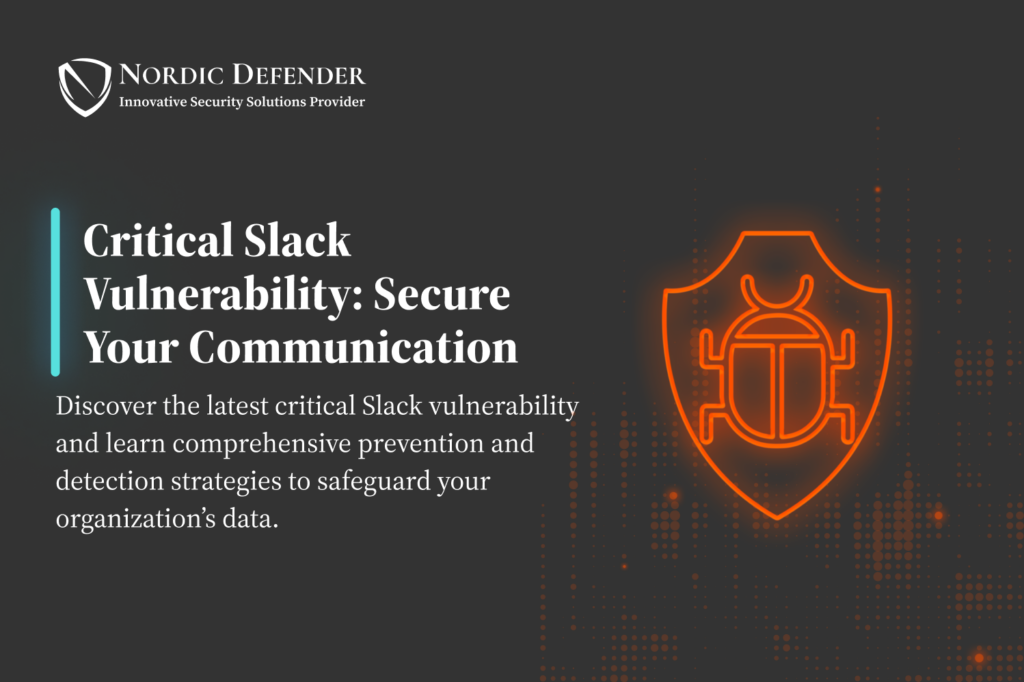In the ever-evolving landscape of cybersecurity, a newly discovered vulnerability in Slack has raised significant concerns. This vulnerability, if exploited, allows attackers to access sensitive data from private Slack channels, posing a substantial threat to organizational security. As a leading cybersecurity provider in Sweden, we aim to provide a thorough understanding of this vulnerability and offer robust prevention and detection strategies to safeguard your data.
Understanding the Vulnerability
The vulnerability in question leverages Slack’s language model used for content generation. Attackers can inject malicious instructions into public channels they control. These instructions can then be executed in private channels, leading to unauthorized data access, data exfiltration, and potential phishing attacks. This exploitation method underscores the importance of securing communication platforms and being vigilant about potential threats.
In-Depth Prevention Strategies for This Critical Slack Vulnerability
- Regular Software Updates and Patch Management: Keeping Slack and other software up-to-date is crucial. Regular updates and patches address known vulnerabilities and enhance security features. Implement an automated update system to ensure timely application of patches.
- Comprehensive User Training Programs: Educate employees about the risks associated with phishing and social engineering attacks. Conduct regular training sessions to reinforce the importance of verifying the authenticity of messages and links. Encourage a culture of skepticism and caution.
- Enhanced Access Controls and Permissions Management: Implement strict access controls to limit who can join and post in public channels. Use role-based access control (RBAC) to ensure that only authorized personnel have access to sensitive information. Regularly review and update permissions to reflect changes in roles and responsibilities.
- Multi-Factor Authentication (MFA) Implementation: Enforce MFA for all users to add an extra layer of security. MFA requires users to provide two or more verification factors, making it significantly harder for attackers to gain unauthorized access.
- Secure Configuration and Hardening: Ensure that Slack is configured securely by disabling unnecessary features and enabling security settings. Regularly review and update configuration settings to align with best practices.
Advanced Detection Measures
- Comprehensive Monitoring and Logging: Implement robust monitoring and logging mechanisms to track Slack activities. Use Security Information and Event Management (SIEM) systems to aggregate and analyze logs for unusual behavior that could indicate an attack.
- Automated Threat Detection and Response: Deploy automated tools that use machine learning and artificial intelligence to detect and respond to suspicious activities in real-time. These tools can identify patterns and anomalies that may indicate a potential threat, allowing for swift action.
- Regular Security Audits and Penetration Testing: Conduct regular security audits and penetration testing to identify and address vulnerabilities in your Slack environment. These proactive measures help in uncovering weaknesses before they can be exploited by attackers.
- Incident Response Planning and Simulation: Develop and maintain an incident response plan that outlines the steps to be taken in the event of a security breach. Conduct regular simulations and drills to ensure that your team is prepared to respond effectively to incidents.
Conclusion for Critical Slack Vulnerability
As a trusted cybersecurity provider in Sweden, we are dedicated to helping organizations protect their data and maintain secure communication channels. By understanding the nature of the Slack vulnerability and implementing comprehensive prevention and detection strategies, you can significantly reduce the risk of falling victim to such threats.
Stay proactive, stay informed, and prioritize cybersecurity to safeguard your organization’s valuable data.
